Historical Bridges of Isfahan
Zayandeh Rud River
Zayandeh Rud River passes through the middle of the city of Isfahan and divides this city into two northern and southern parts. The liveliness and life of Isfahan depended on this river. When Zayandeh Rud is flowing, farmers from Kuhrang city in Chaharmahal and Bakhtiari province to Varzaneh village in the east of Isfahan use a proportion of this river for their farms. Zayandeh Rud gives a vibrant and fresh spirit to the people of Isfahan. Zayandeh Rud originates from Bakhtiari Mountains in the west of Isfahan. This river flows through several cities and villages after passing through the city of Isfahan and then it pours in Gavkhoni Lagoon, in the eastern part of Isfahan. According to some, Sheikh Baha’i, a scientist of the Safavid era, divided the water of the Zayandeh River into 33 separate streams. In this way, he made the most out of the water of this river by these streams that are called ‘Madi’. It is not only human beings that make the most out of their water but animals too try to do the same. Zayandeh Rud hosts hundreds of birds at certain times of the year. From the Sassanid era until today, Historical Bridges of Isfahan have been built to facilitate access to different parts of the city. The most important of them are Marnan, Sio-se-pol, Khaju and Shahrestan Bridges.

Marnan Bridge
Marnan Bridge is 185 meters long and 5 meters wide and it is the oldest bridge on Isfahan’s western end. This bridge was probably called Mehrbin in ancient times. Mehr refers to one of the ancient religions of Iran. One of the greatest and most important gods of the ancient Iranian religion was called Izad Mehr. The evidence of this claim can be a fire temple which is located within a short distance of Zayandeh Rud and Marnan Bridge. However, the main structure of this bridge dates back to Safavid Dynasty. But, Marnan Bridge probably has Sassanid roots. Marnan Bridge was rebuilt under the order of Khajeh Sarfaraz, an Armenian merchant, to renew the access to the Jolfa neighborhood (the residency of Armenians) to the newly established Abbas Abad neighborhood, which was an aristocratic neighborhood. This connection is important because the courtiers of Shah Abbas the Great, who were also important to Armenians, often lived in the Abbas Abad neighborhood.
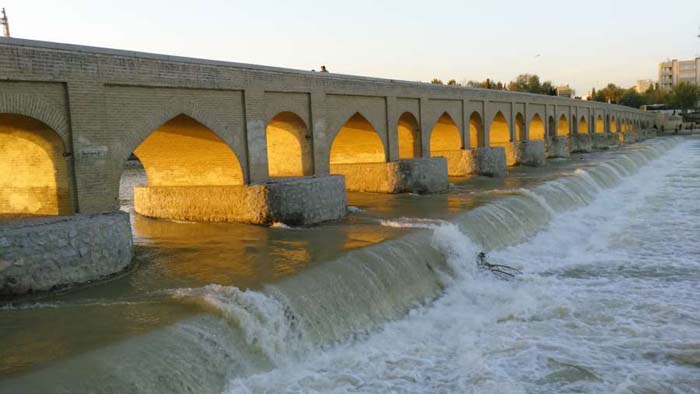
Khaju Bridge
Khaju Bridge is one of the most beautiful bridges among the Historical Bridges of Isfahan. This bridge is 133 meters long and 12 meters wide. It connects Khaju neighborhood (Khajeh) to the tomb of Baba Roknuddin. That is why this bridge is also called Baba Roknuddin Bridge. The construction of this bridge is attributed to Shah Abbas II (1650s). Of course, in the place of this bridge, there used to be a bridge called Hassan beig, which had no decorations. This bridge was destroyed at the same time as Khaju Bridge was about to be constructed. In addition to its main use, Khaju Bridge has also been used as a dam. During the Safavid era, they would have blocked 24 openings of the Khaju Bridge for the following reasons. During certain celebrations such as for ceremonies and boating and swimming competitions, they used the water behind the Khaju Bridge. In the middle of Khaju Bridge and in the eastern part, there is a shahneshin (a place for the king) that has given this bridge a special beauty. This place was the short-term residency of the king and his wives where he could also watch the ceremonies and competitions from above.
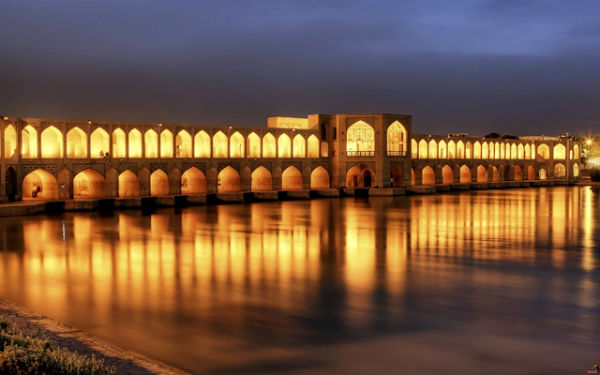
The current decorations of the bridge belong to the Qajar era restorations. The bathhouse on the northern side of the Khaju Bridge was used for washing dead bodies before burying them. Muslims take a person to these bathhouses immediately after he or she has died. The dead’s body is completely washed and prepared for burial. After this, the dead person is wrapped in a cloth and then buried with special rituals. Due to the great access to water, which is a manifestation of purity, most bathhouses were located next to Zayandeh Rud in the past. Unfortunately, these bathhouses have now been completely destroyed. There are two stone lions on the northern and southern fronts of the Khaju Bridge. However, these two lions were not meant to be situated here. In the past, until the end of Qajar era, a stone lion was carved on the grave of heroes in honor of their virtue. This distinguished the tombs of the heroes from the rest of the tombs. Sometimes, on the graves of these heroes, Zurkhaneh (a kind of Persian gymnasium) tools were carved. These two lions were probably brought to Khaju Bridge from their original place (probably from Takht-e Foulad cemetery). The interesting thing is that if you stand right in front of the stone lions at night or in the evening, you will see a light coming out of their eyes. This is because of the type of stone that is used in these parts.
Shahrestan Bridge
The last bridge and probably the oldest of Historical Bridges of Isfahan built on the Zayandeh Rud in Isfahan is the Shahrestan Bridge. The original Shahrestan Bridge, which has been reconstructed in modern times, dates back to the Sassanid dynasty. Shahrestan Bridge is 105 meters long and 5 meters wide. The bridge was used by the caravans for entering and exiting the city. During the Safavid dynasty, Zoroastrians, whom Muslims considered as atheists, were driven away from the city. Subsequently, they settled in the southeastern part of Isfahan. One of the uses of the Shahrestan Bridge was accordingly to connect this neighborhood to the city. Also, if a caravan wanted to travel to the south of Iran (Fars province), it would often choose this bridge to cross. Therefore, a toll counter was installed at the entrance of this bridge. This place was usually built at the entrances of cities where they would have received tolls from incoming caravans. Unfortunately, there is no longer any trace of these toll counters in Isfahan.
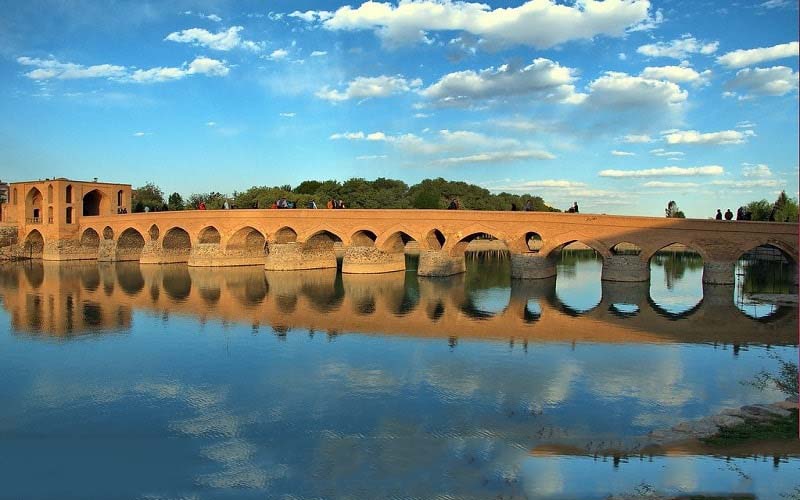
Isfahan has other reconstructed Historical Bridges that today have the same use as the old bridges in the past had. These bridges are Azar, Vahid, Felezi, Ferdowsi and Ghadir bridges. Old bridges such as Sio-se-pol, Khaju, Marnan and the Shahrestan Bridges today are for pedestrian use only. With their beautiful lighting, these historical bridges have become a place for locals to relax and spend time.

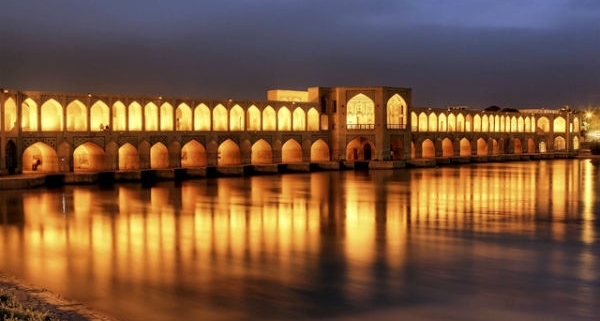
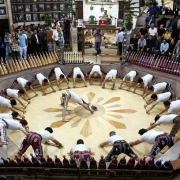
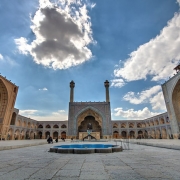
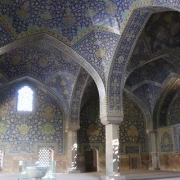
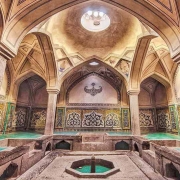
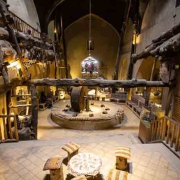
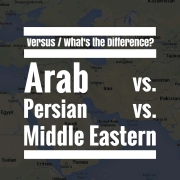
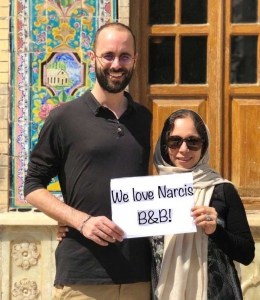




Leave a Reply
Want to join the discussion?Feel free to contribute!